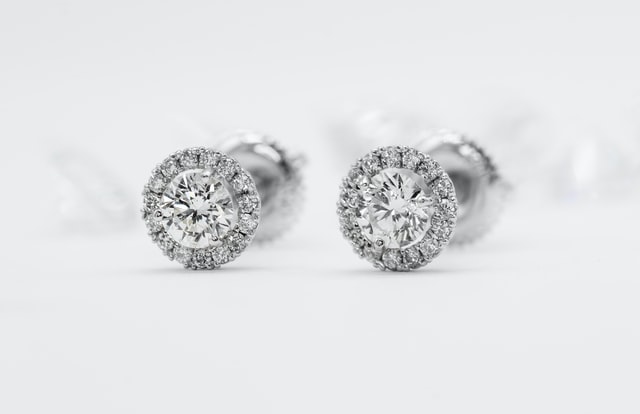
5 Common Diamond Inclusions to Look Out For

Diamonds are a girl’s best friend, or so it’s been said. If you’re looking for the perfect diamond, you might think that an included diamond is a flawed diamond and should therefore be avoided at all costs. However, this is not at all the case. Inclusions, especially small ones that do not prevent the diamond from being “perfect to the eye” and can actually prove that a diamond is a natural one. Ironically, lab grown diamonds are structurally perfect and yet valued much less than a naturally formed stone. Here are five inclusions to check out:
Feathering
Feathering is a descriptive word and the flaw it describes often looks feathery. It is an internal fracture within the stone’s structure, and it creates a wispy inclusion that looks remarkably like a tiny, crystal feather. Very small feathering, while almost certain to affect the stone’s clarity, is not otherwise too much of a problem. Large areas of feathering are a clear sign of structural weakness within the stone, and can lead to worsening damage and even breakage. Read more about diamond clarity here.
Chips
Chips are shallow defects on the outer surface of a diamond. A good cutter will only allow a minute amount of chipping around the girdle, the narrow band that comprises the widest part of the diamond. Taking pains to remove any damage from the other facets in order to achieve a symmetrical cut. Chips can occur after the cut if the diamond is hit, for example, with a heavy hammer or sustains damage in another way. In these cases, the chip will disrupt the polish and symmetry of the finished diamond.
Contaminants
During the diamond’s growth phase – which usually took place billions of years ago in the vent tubes of the volcanoes which proliferated the Earth – small flecks of other minerals were caught up in the carbon and became fixed into the stone. These particles are usually the size of a dust mite – and can often only be seen under strong magnification, even when there is a small cluster of them. These small groupings are called ‘clouds’ as they cause a little hazy patch in the diamond’s interior. Single particles are often called ‘pinpoints’.
Cavities
Just like those that can occur in teeth, cavities are voids or empty spaces. They can occur anywhere in the diamond’s structure, either entirely enclosed within the diamond, or appearing in a face or on the girdle, and causing a small distortion to the clarity.
Crystals
Finding a crystal inside a crystal sounds like a good thing, but, sadly, it is not. Even when the small crystal is another diamond! Diamonds are formed during a tumultuous period, geographically speaking, and sometimes the process hiccups and a tiny diamond crystal is formed within the material that will become the main diamond. These aberrant crystals can be long and slender, and are called needles. Stout stocky crystals are called knots. Those with a darker appearance than the host diamond are called ‘dark crystals.
Any of these inclusions will stand as proof of your having a natural diamond in your hands. Inclusions won’t be visible to the human eye, just tucked deep down within the stone. They are important in designating the ultimate value of your piece. Whatever your diamond’s size or quality, make sure it comes with a certificate from GIA or AGS to ensure your own complete peace of mind.
Feature Photo by Sabrinna Ringquist on Unsplash





































